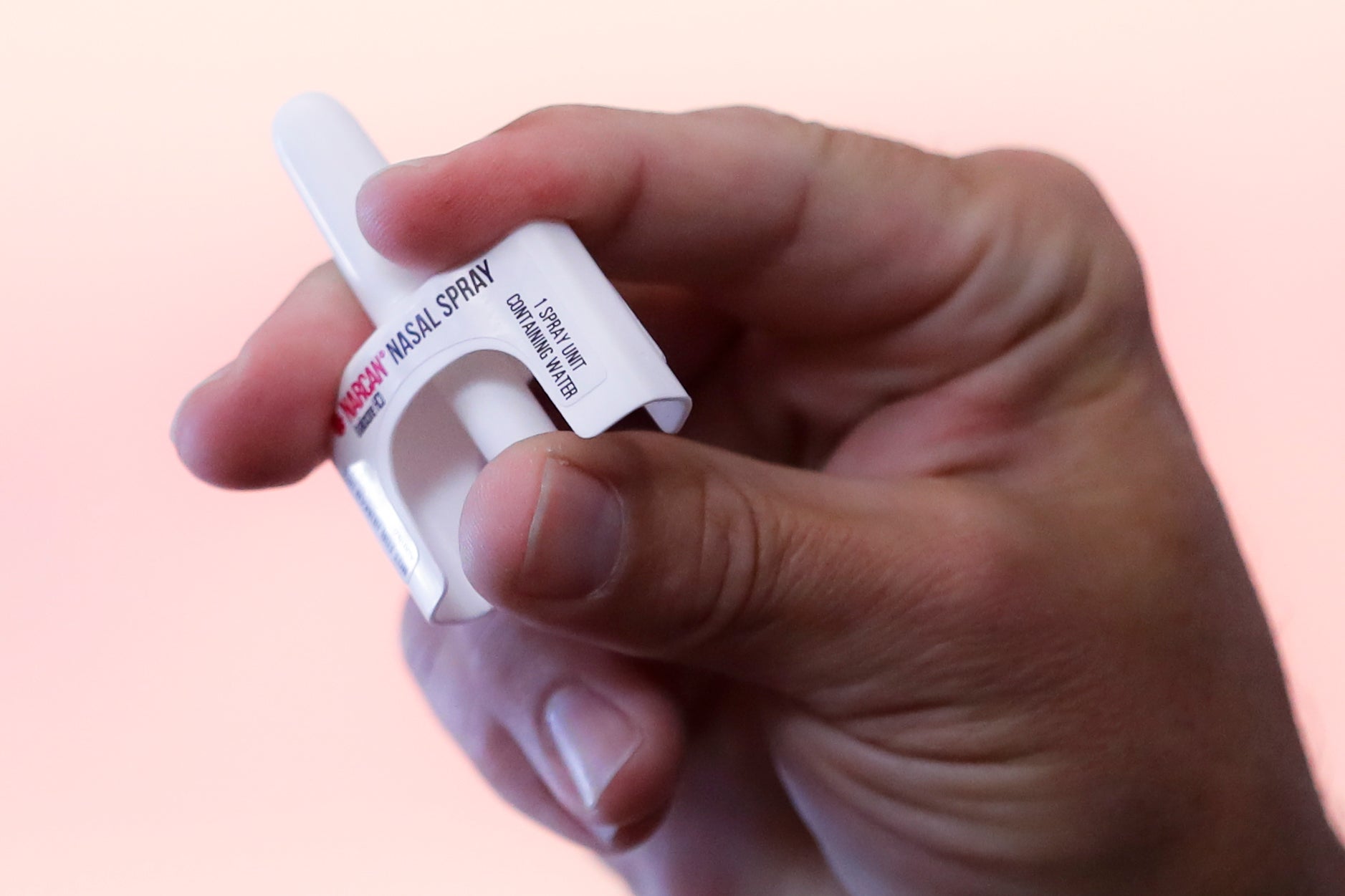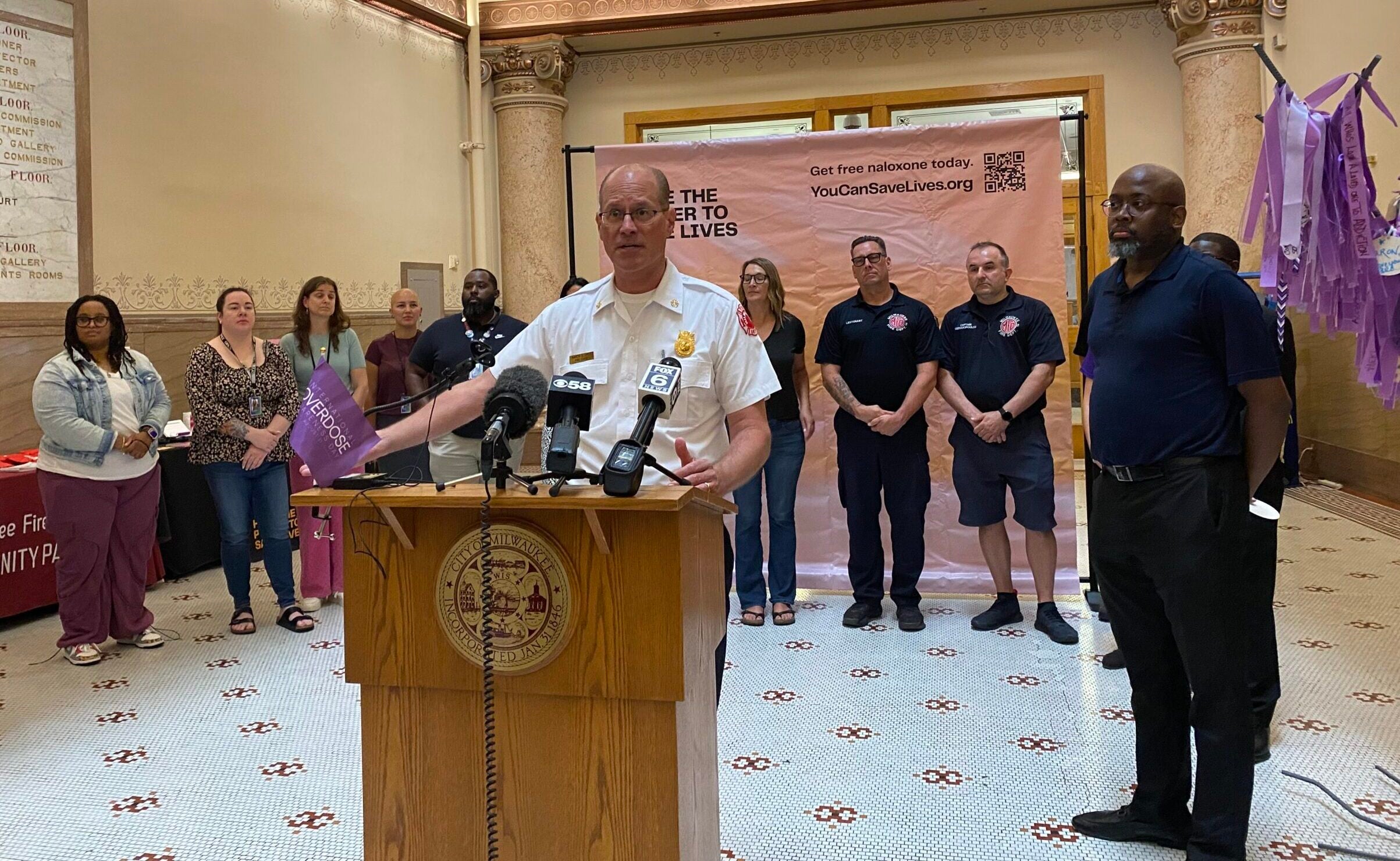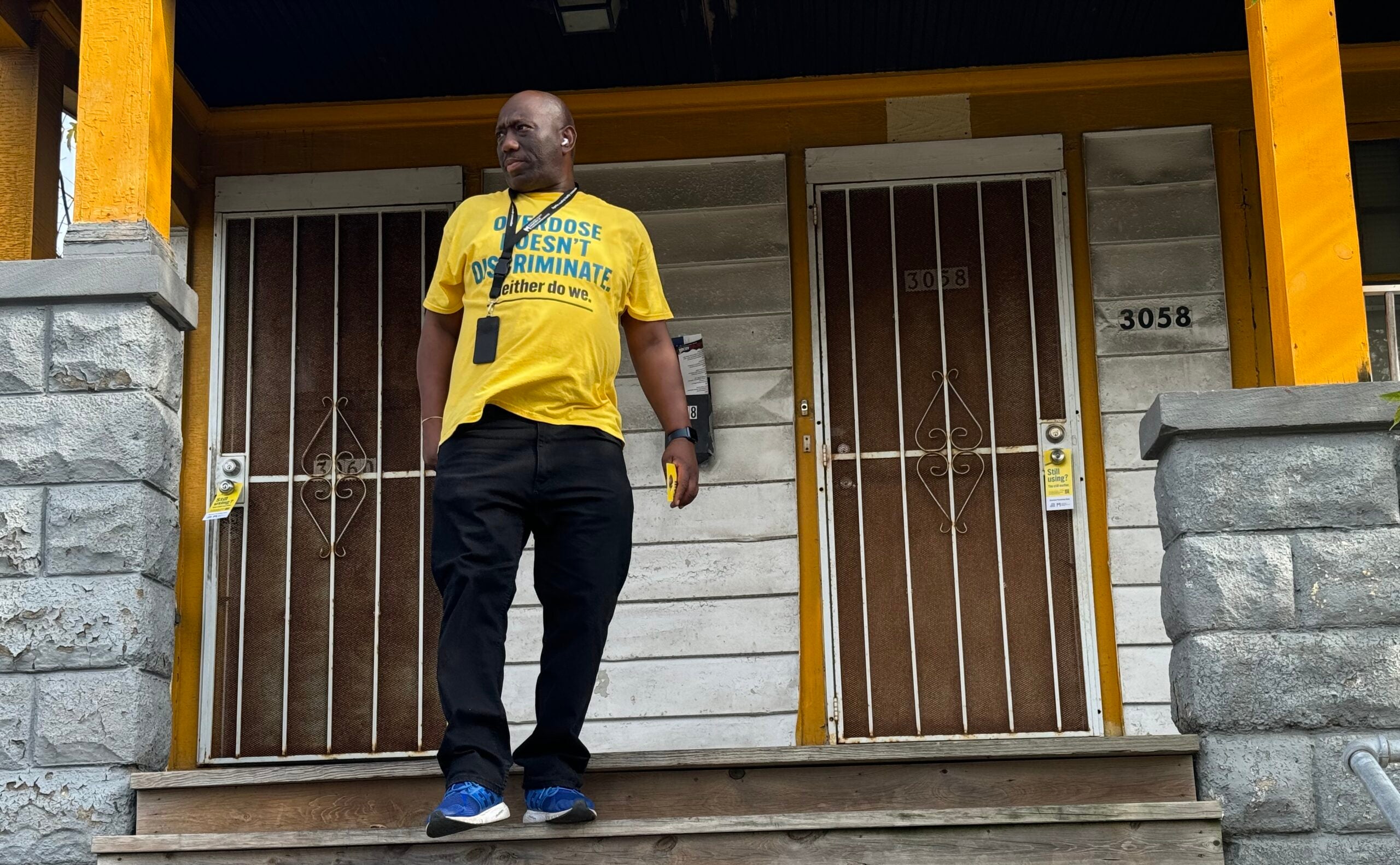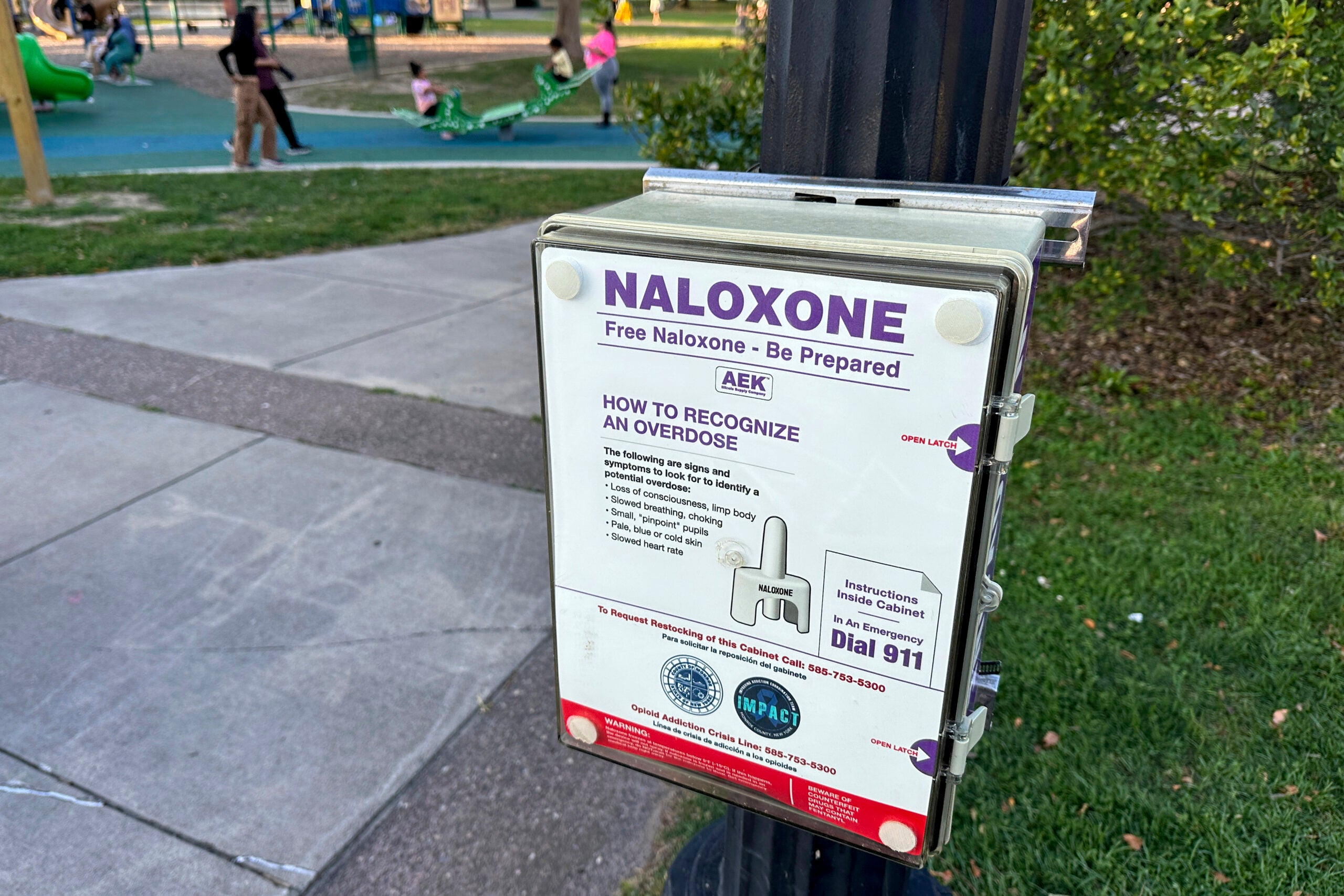A Wisconsin health care provider is rolling out a new harm reduction program to combat substance abuse in rural communities.
Marshfield Clinic Health System used federal funding to place naloxone boxes in 43 locations over the last year, ranging from Barron and Rusk Counties in the northwest to Dodge and Portage Counties in central Wisconsin.
The boxes contain the naloxone nasal spray known by the brand name NARCAN that can quickly reverse an opioid overdose.
News with a little more humanity
WPR’s “Wisconsin Today” newsletter keeps you connected to the state you love without feeling overwhelmed. No paywall. No agenda. No corporate filter.
Over 1,700 people in Wisconsin died from an overdose in 2023, according to the CDC. That number was down slightly from 2022 but is still close to 50 percent higher than what the state saw just five years ago.
Meagan Barnett, the manager of Marshfield Clinic Health System’s Center for Community Health Advancement, said these naloxone boxes can help continue to lower the state’s number of overdose deaths.
She spoke to WPR’s “Wisconsin Today” about how the program and the community partnerships involved.
The following interview was edited for clarity and brevity.
Kate Archer Kent: Can you describe what these naloxone boxes look like?
Meagan Barnett: Picture an AED (automated external defibrillator) box in the wall, used to help with CPR when someone passes out. It’s very similar to that. So these are clear boxes about the same size as an AED, and they contain Narcan, along with breathing masks, gloves and a tear off instruction sheet on how to administer this life saving medication.
KAK: How do you decide where to place these boxes within communities?
MB: We have been leaning on our partnerships, specifically with the health departments in these communities, to tell us where they should be placed, and then they work with those organizations to do that. A majority are actually in schools, which I found really interesting. And I think that comes from the Department of Public Instruction just having more eyes on whether or not these should be in schools. We have (boxes in) fire departments, a few local agencies like libraries and Community Action agencies.
KAK: What would you tell parents who might have concerns about having these Naloxone boxes in schools?
MB: I just like to say, it’s not bothering anybody, just like the AED, or some schools have EpiPens in boxes. This is just another measure to make sure everybody is safe within that school. Everybody wants to be able to send their kid to school and hope that they’re safe there, and sometimes accidents just happen.
We heard a report from Crandon that a kid came to school with a water bottle, and on the tip of the water bottle there was fentanyl from home, from caregivers using. That child accidentally overdosed but was able to be saved because Naloxone was available. You just never know what is going to happen, and so we want to be prepared for that unimaginable event that hopefully we never have to encounter.
KAK: What are some of the challenges that come with harm reduction and treating opioid addiction in rural communities in particular?
KB: A few things come to mind. Stigma is very real in the communities, whether rural or urban. I think there’s a lot of room for education on what this is and what it’s not. There’s a lot of stigma around enabling somebody. Then I would also say, specifically in rural communities, the resources are so sparse and spread out. So we’re really trying to find where people are gathering and frequenting so that we are getting these medications into the right hands.
KAK: How long is the funding there to keep these boxes going?
MB: It was a short grant from the Health Resources and Services Administration, so we actually just wrapped up the project in August. These boxes have all already been placed. However, we are continuing with these efforts.
So Marshfield Clinic has a funding opportunity out for communities in our service area right now to apply to get a box, and that is just straight funding that Marshfield Clinic is investing in the communities.
We also launched a Harm Reduction Saves Lives Toolkit, which is a campaign that any community can take and launch. The goal of that toolkit is really to get the conversation started about harm reduction and start reducing some of that stigma in the community.






